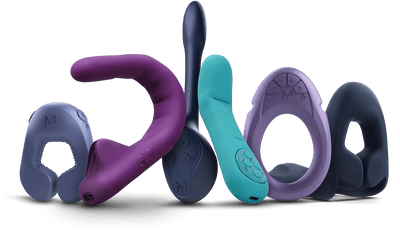Understanding the diverse world of BDSM collars and their symbolic significance requires a foundation of knowledge and respect for the core principles of consent, communication, and personal boundaries. By refining your understanding of the various collars and their intended uses, you'll be better equipped to navigate their potential in your consensual power exchanges, thus enriching your kink play and fostering trust with your partner.
In this article, we delve into BDSM collars, exploring their various shapes and forms and the roles they exhibit within the kink community. Acknowledging and respecting the importance of consent and open communication, we aim to provide readers with invaluable insights into the intricate dynamics of incorporating collars within their personal adventures.
1. Training collars
Training collars come in various styles and materials, designed for wear during a specific period in the learning process of a submissive or a dominant. Typically, these collars are temporary, intended to remind the wearer of their ongoing commitment to explore and understand their role in a BDSM relationship. They can also be used as tools to reinforce lessons, expectations, and boundaries during training.
Throughout the training period, the submissive works on honing their skills and understanding of their desired role, guided by their dominant. This phase is an essential foundation for the future of their power dynamic, teaching the submissive to be open and receptive to feedback while the dominant learns to provide guidance and care.
2. Day collars
The day collar is a discreet yet powerful symbol of submission worn by individuals who exhibit commitment and devotion outside the BDSM scene or play environment. These collars come in various forms, such as necklaces, chokers, or less conspicuous jewelry, allowing the wearer to maintain their public appearance without drawing unwanted attention to their power dynamic.
Day collars are an intimate reminder of the bond between dominant and submissive, acting as a subtle yet powerful expression of devotion, even when their kink play is not in session. The day collar maintains the emotional connection between the individuals, keeping the power dynamic alive and thriving privately.
3. Play collars
As the name suggests, play collars are designed for use during BDSM play sessions, allowing participants to indulge in power exchanges and maintain the energy of their kink encounters. While play collars come in various forms, such as leather or metal, they typically feature a more prominent design than training or day collars.
Play collars accentuate the dynamic between dominant and submissive within a session, amplifying the sense of connection and control during play. Whether the collar's use is purely aesthetic or serves a functional purpose with attached objects such as leashes or restraints, play collars contribute to the deliciously decadent atmosphere of a BDSM scene.
4. Ownership collars
The ownership collar represents the pinnacle of commitment and trust within a BDSM relationship, signifying the dominant's claim over their submissive. These collars, often made from materials like leather or metal, may be lockable or contain personalized symbols and inscriptions to reflect the unique bond between partners.
Ownership collars demonstrate the deepest level of devotion and surrender, as the submissive agrees to submit themselves entirely under the care and guidance of their dominant. Both parties must understand and respect the gravity of this commitment, only entering such an arrangement willingly and with total consent.
Collaring ceremonies: marking the ritual of commitment
Collaring ceremonies are a time-honored tradition within the BDSM community, serving to celebrate and formalize the bond between dominant and submissive. While these ceremonies vary in scope, formality, and intricacy, the unifying theme is the act of a dominant bestowing a collar upon their submissive, signifying their mutual consent and understanding of the power dynamic.
The significance of a collaring ceremony depends on the specific relationship and the individuals involved, with some parties choosing a more intimate, private experience and others opting for larger gatherings in the company of like-minded friends or community members. The primary focus of these events is the acknowledgment and respect for the emotional and physical journey of both the dominant and submissive.
Takeaway
The mesmerizing world of BDSM collars encompasses diverse styles, forms, and roles, expanding the possibilities for self-expression and power play. By deepening our understanding of the various collars and their significance within the BDSM community, we can approach our erotic journeys with a more profound appreciation for the nuances of kink dynamics.
The unyielding bond of trust and consent is at the core of every collar, strengthening the emotional and physical connections between dominant and submissive. By honoring these foundational principles, BDSM collars serve as a potent reminder of the shared commitment to growth, exploration, and mutual satisfaction. Embrace the art of collaring, and continue to elevate the power and allure of your intimate encounters.















































